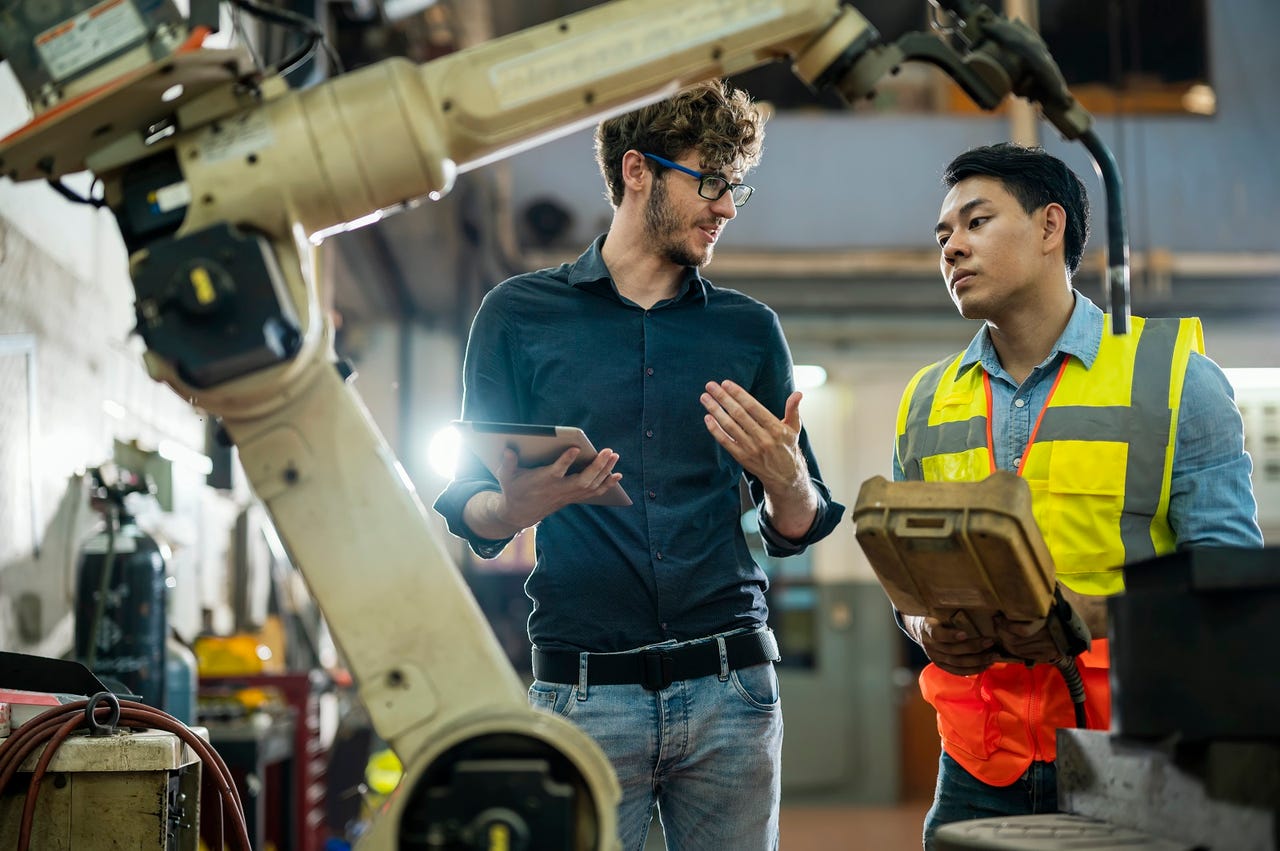Yes, robots have taken over (So why don't we care?)


The past couple of years has seen an unprecedented surge in the adoption of robots by a variety of sectors, including major employers like manufacturers and warehouse operators such as Amazon. The trend was already ramping up when the pandemic hit, but labor shortfalls and supply chain pressures sent it into overdrive, and there's no going back.
At the end of 2021, Global X forecasts growth in industrial robots from 16 billion to 37 billion over the next 10 years, noting the importance of 2022 as a major adoption tipping point.
Artificial Intelligence
What does that mean for humans? And given the longstanding fears of the impact of robots on employees, why hasn't a bigger deal been made of this?
Veo, which provides sensing and intelligence to four of the biggest robot companies in the world (FANUC, Yaskawa, ABB, and Kuka), came up with part of the answer when it surveyed 500+ manufacturers across the US, UK, and Japan in Q2. What's clear in the resulting report, Veo Robotics' 2022 Manufacturing Automation Outlook, is that this indisputably is a landmark moment in our relationship with automation, one in which robots are being normalized across sectors that previously relied heavily on human labor.
Over 55% of global manufacturers report now having ten or more robots in their facilities, with nearly one in three (32%) saying they have 30 or more. The pandemic and a historically hot market clearly has a lot to do with this. As inflation and recession fears hit manufacturers, one in three said "reducing the cost and complexity of manufacturing" was one of their biggest challenges over the next six months to a year. However, this was still trailing the challenge of hiring and training skilled workers (37%) and supply chain constraints (34%).
That last bit is an important clue in the puzzle of why we're not hearing more cries of alarm about the changing labor dynamics brought about by automation. The historically strong labor market means employees aren't feeling the pinch like they might have in years past. Notably, that's changed the public perception of automation, as have trends in the consumer sector toward things like contactless service (for which robots are well suited) and delivery (more and more the realm of autonomous vehicles).
Also: No really, robots are about to take A LOT of jobs
More to the point, though, there's an element of the frog being kept in the pot as the water is brought to a slow boil. Notably, human-robot collaboration has risen for 6 out of 10 manufacturers in the last year, according to the Veo report, as facilities turn to automation to assist workers amid the labor shortage. That's led to a perception by both employers and employees that automation is not replacing workers, which is probably true, but also probably a temporary and transitional phenomenon. Most manufacturers (57%) believe that robots are not directly replacing workers but rather working alongside them and freeing human workers up to do more skilled and less repetitive work.
There's also a technological aspect that hinders the idea of robots taking over wholesale. Make no mistake; automation systems have become phenomenally sophisticated in recent years, converging advances in AI, machine vision, cloud computing, and sensor technologies into nimble platforms that can work as generalists in a way their industrial automation forebears -- hyper specialized to do very specific tasks -- never could.
Also: Anonymity: Why it's the secret weapon for digital workforces
Still, the technology needs a lot of babysitting, with 81% of manufacturers saying they deal with robot-led production shutdowns, which typically require human-assisted solutions.
All of this adds up to a unique set of circumstances. Robots are very definitely encroaching in a variety of sectors, gaining ground in ways that will have a major impact on labor markets. But for the time being, the general attitude is one of acceptance and non-concern. If I had to bet, I'd wager that an easing labor market, rising inflation, and looming recession will snap plenty of folks back to attention in the years ahead. Robots have been a bogeyman for a long time, and despite our current complacency, that's not likely to change.